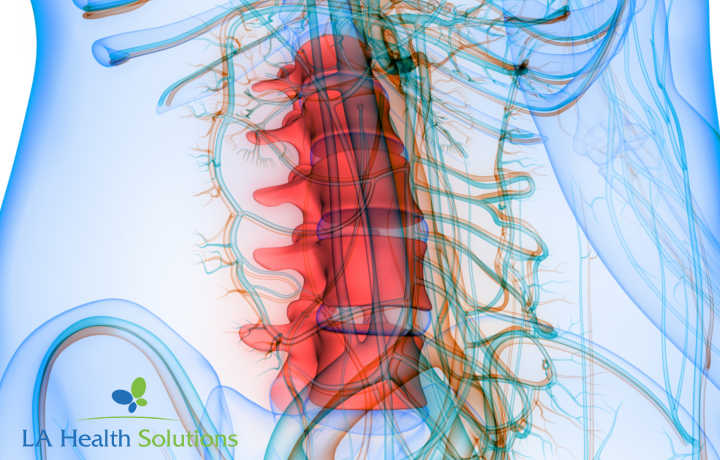What Is A Facet Joint Syndrome?
The most common cause of low back pain is caused by facet joint arthritis or facet joint syndrome. Facet joint syndrome is the general pain in the joint between two spinal vertebrae. It is more commonly referred to as osteoarthritis. Facet joints allow the spine to bend, turn and twist. When a facet joint is healthy, each joint is buffered with cartilage and lubricated with synovial fluid which enable vertebrae to move against each other without grinding or pinching. Each vertebrae segment has three joints and two facet joints in the rear with a large intervertebral disc toward the front. The facet joints connect each vertebrae. When facet joints are injured, they can limit movement or make bending or twisting uncomfortable and painful. The facet joints are often the cause of back and neck pain resulting in stiffness and mobility problems. If you are experiencing chronic pain or spasms in your neck, shoulders or back, and it worsens when active, you might be suffering from facet joint syndrome.What Are The Symptoms?
The most common symptoms include shoulder and low back and buttocks pain. The following are symptoms associated with the disease:- Pain that is worse in the beginning and end of the day
- Pain that changes with the weather
- Lower back pain and spasms that radiate in to the buttocks, pelvic area or upper thighs
- Headaches at the base of the skull
- Neck pain that radiates into the shoulders
- Pain in the lower back from standing long periods of time
- Riding or sitting in the care for extended periods of time causing pain
- Increased pain with extended periods of time standing
What Are The Causes?
Facet joint syndrome can occur anywhere in the spine. It develops in the small joints between each vertebra called facet joints that are located in the neck and low back. Because these joints are in constant motion, they can be worn down over time. The joint surfaces are lined with cartilage that cushions the vertebrae allowing them to glide smoothly over each other. When the cartilage becomes worn and inflamed, it can cause pain in nearby nerve endings. When a facet joint is damaged due to normal deterioration, injury or trauma, it may cause long-term or even permanent disability. The most common causes of facet joint syndrome include: Trauma: Whiplash and other types of trauma can cause a facet joint injury. This can cause pain and inflammation in the facet joints. Degenerative Changes: Degeneration, or the wear and tear of the spine, is one of the most common cause of facet joint syndrome. Degeneration can lead to pain in the thoracic, cervical and lumbar spine. Age-Related Wear & Tear: Age-Related wear and tear is the most common cause of this condition. Over time and with the constant movement over the years, the cartilage can break down. The wear and tear can be increased due to normal physical demands and the stress of physical work, play and life. Genetics: A family history of facet joint disease may lead to a higher risk of developing it. Other Factors: A rigorous job or a hobby that requires repetitive motion that involves bending over or twisting, might increase the risk of this disease. Excessive weight is a contributing factor and the presence of diseases like gout, different types of arthritis, or inflection also increase the changes of facet joint syndrome.What Are The Treatments?
There are a variety of non-surgical and conservative treatment options that can improve the chronic pain from this syndrome. The treatments can bring temporary relief and in some patients significant relief. The non-operative treatments including the following:- Modifying daily activities to reduce stress on the back muscles
- Medications to reduce inflammation
- Heat & Cold Therapy
- Physical Therapy
- Medial Branch Blocks Or Facet Joint Epidural Steroid Injections

Our clinics offer a variety of patient services including physical therapy, chiropractic treatment, personal injury, work reconditioning, laser therapy, orthopedic surgery, interventional pain management, neurology and neurosurgery. We have the best healthcare professionals and resources available which means our patients will save time on the approval process, receive faster referral and appointment times, and get the right treatments needed to get well. Your LA Health Solutions’ team will take care of the paperwork so you can concentrate on getting well.
Telephone: 844-496-LAHS (5247)

